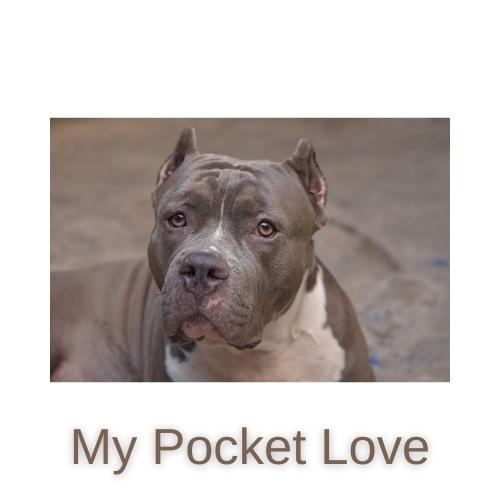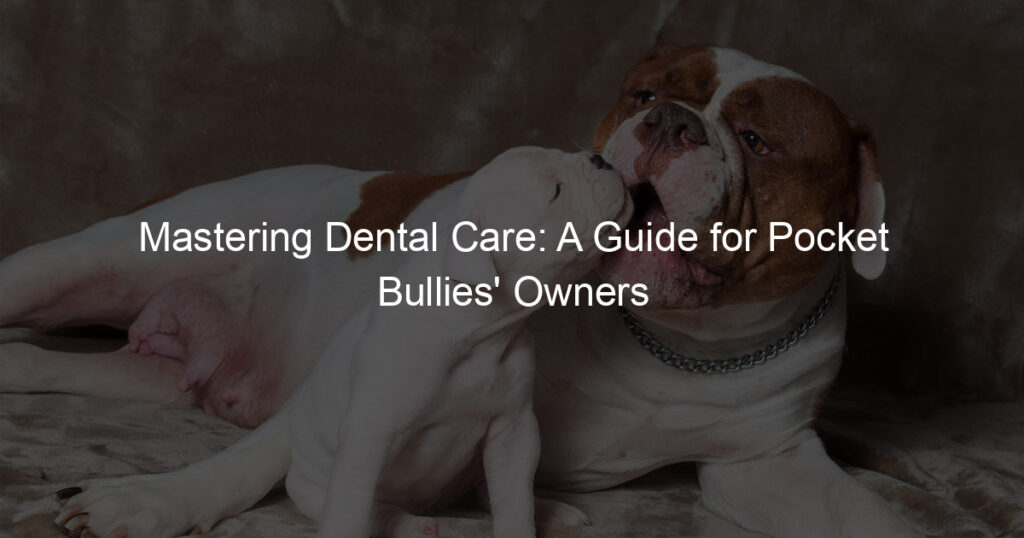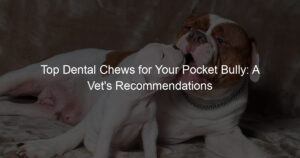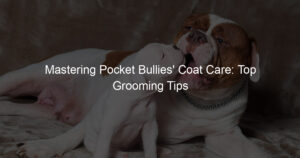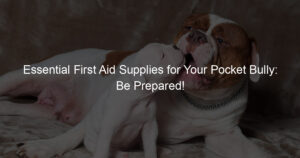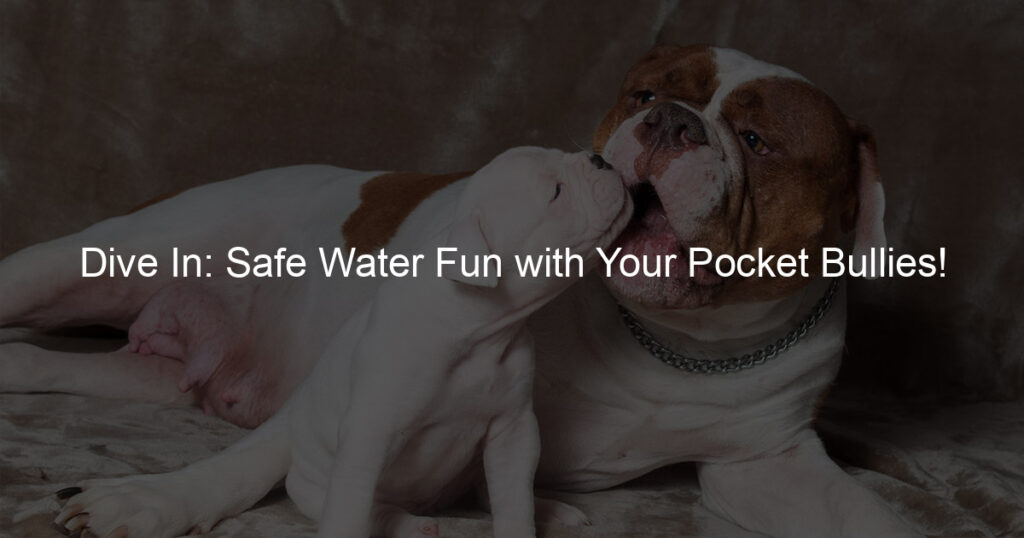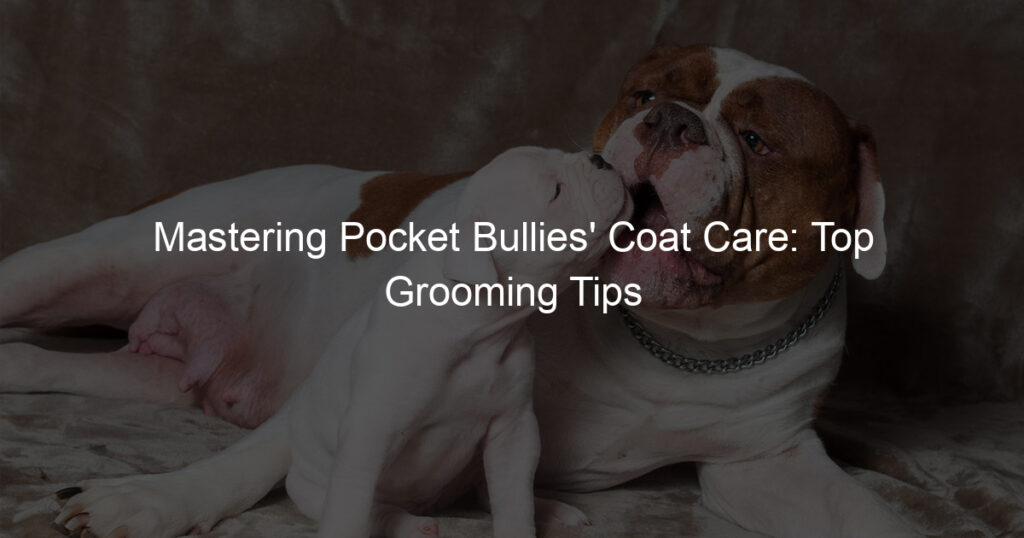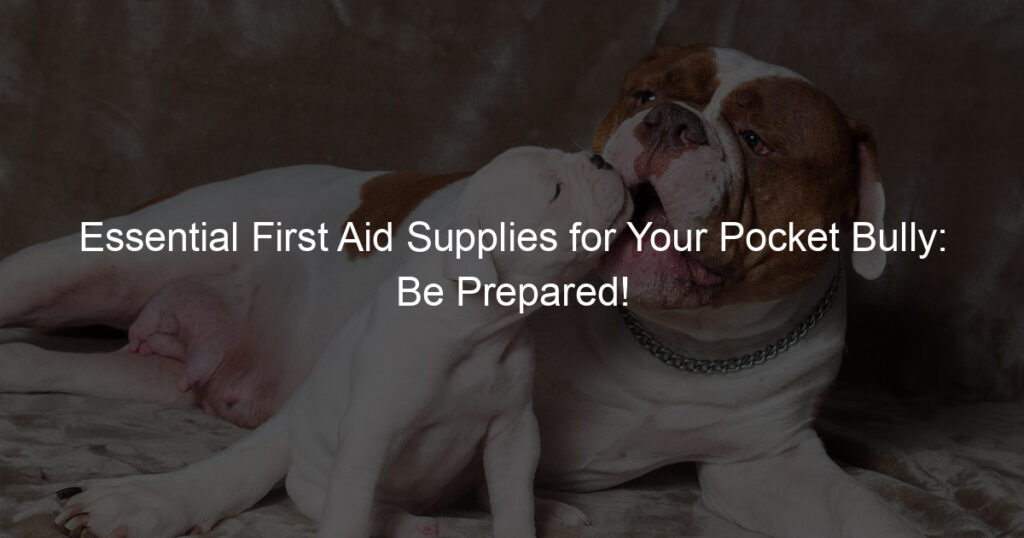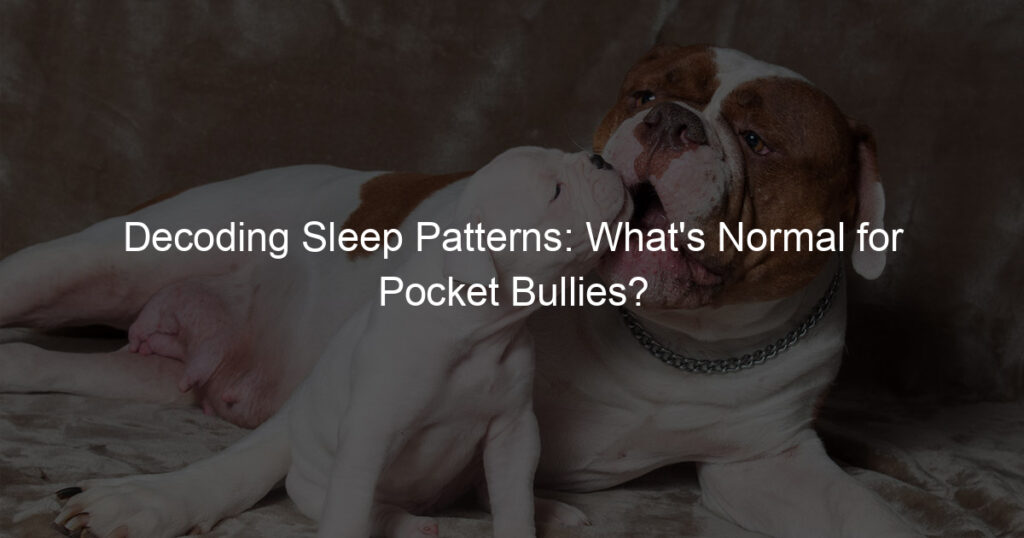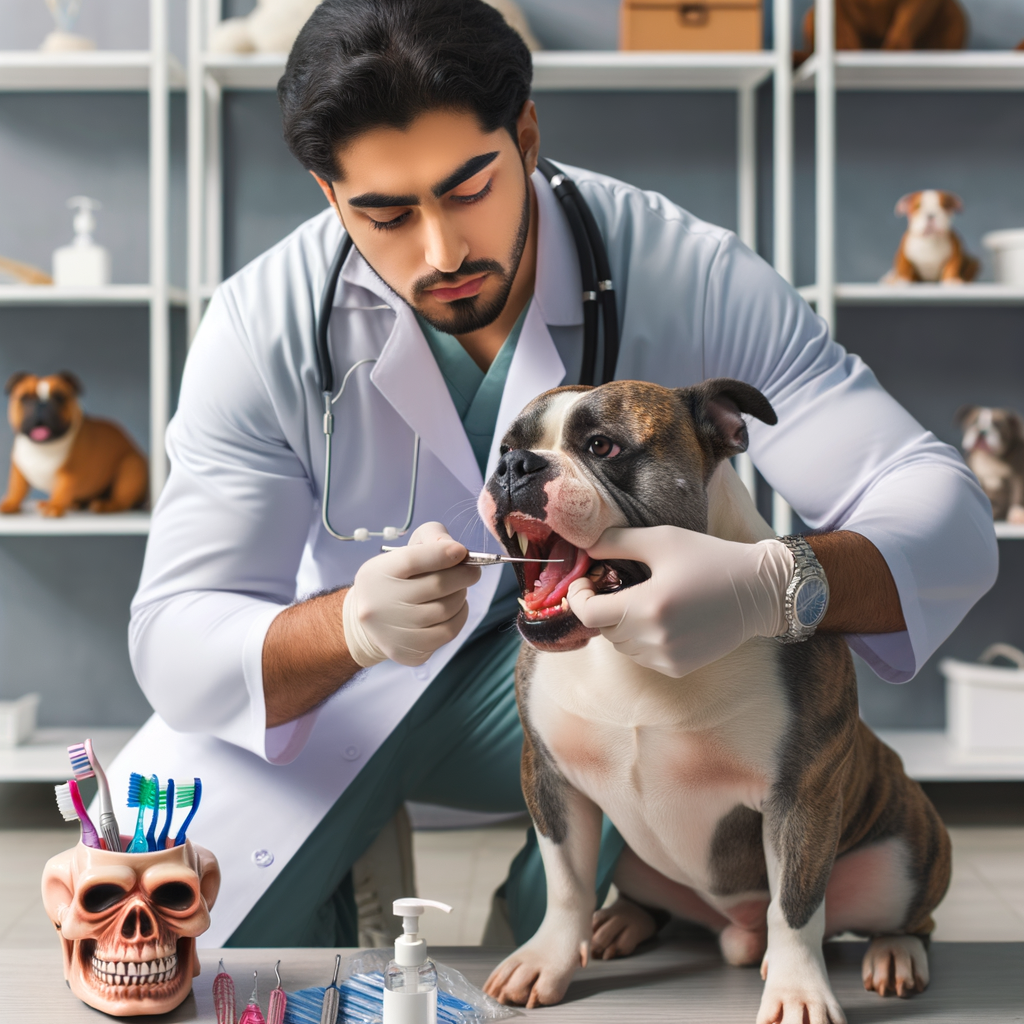
Introduction to Pocket Bullies Dental Care
Just like humans, dogs, particularly Pocket Bullies, need proper dental care to maintain their overall health. This article will guide you through the importance of dental hygiene in dogs and the specific challenges faced in maintaining oral hygiene in Pocket Bullies.
- Importance of Dental Hygiene in Dogs
- Specific Challenges in Pocket Bullies Oral Hygiene
Dental hygiene is an essential aspect of a dog’s health. Poor dental health can lead to various problems like bad breath, tooth loss, and even severe infections. According to the American Veterinary Medical Association, 80% of dogs show signs of oral disease by age 3, making dental care a crucial part of their overall health regimen.
Pocket Bullies, a popular breed known for their muscular build and compact size, face specific challenges when it comes to oral hygiene. Their unique jaw structure and smaller mouth size can make regular cleaning difficult. Additionally, this breed is prone to dental diseases like periodontal disease and tooth decay. Therefore, a specialized approach is needed for their dental care.
In the following sections, we will delve deeper into understanding dog oral health, provide tips for good dental hygiene, and discuss specific dental hygiene practices for Pocket Bullies.
Understanding Dog Oral Health
Just like humans, dogs also require good oral health. A healthy mouth is not just about fresh breath, but it also contributes to a dog’s overall well-being. In this section, we will delve into the fascinating world of canine dental anatomy.
Canine Dental Anatomy
Dogs have a different dental structure compared to humans. Understanding their dental anatomy can help you better care for your dog’s oral health.
- Teeth types and their functions
- Common dental issues in dogs
- Gingivitis: This is inflammation of the gums caused by plaque buildup.
- Periodontal Disease: This is a severe gum disease that can lead to tooth loss and other health problems.
- Broken Teeth: Dogs can break their teeth by chewing on hard objects.
- Oral Tumors: These are growths that can occur anywhere in the mouth.
Dogs have four types of teeth, each serving a unique function:
| Type of Tooth | Function |
|---|---|
| Incisors | These are the small teeth at the front of the mouth, used for nibbling and grooming. |
| Canines | These are the long, pointed teeth on the sides, used for tearing and gripping. |
| Premolars | These are the teeth behind the canines, used for shearing and cutting food. |
| Molars | These are the teeth at the back of the mouth, used for grinding and crushing food. |
Just like humans, dogs can also suffer from various dental issues. Some of the most common ones include:
Understanding your dog’s dental anatomy and common dental issues can help you take better care of their oral health. Remember, a healthy mouth contributes to a healthy dog.
Signs of Dental Problems in Pocket Bullies
As a responsible Pocket Bully owner, it’s essential to be aware of the signs that your furry friend might be experiencing dental issues. Here are some common symptoms to watch out for:
- Bad breath: While it’s normal for dogs to have a certain doggy breath, excessively foul or unusual smell could be a sign of dental problems. This could be due to a buildup of bacteria in the mouth, which can lead to gum disease or tooth decay.
- Difficulty eating: If your Pocket Bully is having trouble eating or seems to be in pain while chewing, it might be due to a dental issue. They might chew on one side of their mouth, drop food while eating, or even lose their appetite.
- Excessive drooling: While some drooling is normal, especially during or after meals, excessive drooling could be a sign of a dental problem. This could be due to a toothache, mouth injury, or an oral infection.
Remember, these signs are not definitive proof of a dental problem, but they should prompt you to seek a professional opinion. Regular dental check-ups are crucial in maintaining your Pocket Bully’s oral health and catching any potential issues early.
Dental Care for Pocket Bullies
As a Pocket Bullies owner, it’s essential to understand the importance of dental care for your furry friend. Regular dental check-ups play a crucial role in maintaining your dog’s oral health. Let’s delve into the details.
Regular Dental Check-ups
Regular dental check-ups are a fundamental part of your Pocket Bullies’ overall health care routine. They help ensure that your dog’s teeth and gums stay healthy and free from disease. Let’s take a closer look at why these check-ups are so important and what you can expect during a visit to the vet.
- Importance of Regular Vet Visits
- What to Expect During a Dental Check-up
Regular vet visits are vital for your Pocket Bullies’ dental health. These visits allow your vet to spot any potential dental issues early, such as gum disease or tooth decay, and take action before they become serious problems. According to the American Veterinary Medical Association, 80% of dogs show signs of oral disease by age three, emphasizing the importance of regular check-ups.
During a dental check-up, your vet will thoroughly examine your dog’s mouth. They will check for signs of oral disease, such as red or swollen gums, bad breath, or loose teeth. They may also perform a professional cleaning to remove any plaque or tartar build-up. This process is usually painless for your dog, but they may be sedated if they are particularly anxious or if the vet needs to perform a more in-depth procedure.
In conclusion, regular dental check-ups are an essential part of your Pocket Bullies’ health care routine. They help keep your dog’s teeth and gums healthy and can prevent serious dental issues down the line. So, make sure to schedule regular vet visits for your furry friend.
Home Dental Care Practices
Good dental care is essential for your Pocket Bullies’ overall health. Here are some home dental care practices that can help keep your pet’s teeth clean and healthy.
- Brushing your Pocket Bullies’ teeth
- Choosing the right dental care products
- Benefits of dental chews and toys
Brushing your dog’s teeth is one of the most effective ways to prevent dental disease. It’s recommended to brush your Pocket Bullies’ teeth at least two to three times a week. Use a dog-friendly toothpaste and a soft-bristled toothbrush. Start by gently rubbing your dog’s teeth and gums with your finger. Once they’re comfortable, you can start using the toothbrush. Remember, patience is key when introducing your dog to teeth brushing.
When it comes to dental care products for your Pocket Bullies, it’s important to choose the right ones. Look for products that are specifically designed for dogs. Avoid using human toothpaste as it contains ingredients that can be harmful to dogs. Instead, opt for a dog-friendly toothpaste that’s safe for your pet to swallow. Additionally, consider investing in a dog toothbrush that fits comfortably in your dog’s mouth.
Dental chews and toys are not only fun for your Pocket Bullies, but they also provide dental benefits. Chewing helps to clean your dog’s teeth by removing plaque and tartar build-up. It also promotes healthier gums. Dental chews and toys come in various shapes and sizes, so you can choose the ones that your dog likes the most. However, always supervise your dog while they’re chewing to prevent any choking hazards.
Remember, home dental care practices are an important part of your Pocket Bullies’ dental care routine. However, they should not replace regular vet visits and dental check-ups. Always consult with your vet for the best dental care practices for your pet.
Tips for Good Dental Hygiene in Dogs
Ensuring your dog’s dental health is a crucial part of their overall well-being. Here are three key tips to help you maintain good dental hygiene in your canine companion:
- Maintaining a Balanced Diet
Just like humans, dogs need a balanced diet for good dental health. Foods rich in vitamins, minerals, and enzymes can help prevent dental diseases. For instance, crunchy vegetables like carrots can naturally clean your dog’s teeth. Avoid giving your dog sugary foods as they can lead to tooth decay.
- Regular Teeth Cleaning
Regular teeth cleaning is another essential aspect of dog dental care. You should brush your dog’s teeth at least two to three times a week. This will help remove plaque and tartar buildup, preventing gum disease and bad breath. Remember to use a toothbrush and toothpaste designed for dogs.
- Using Dental Hygiene Products
There are numerous dental hygiene products available for dogs. These include dental chews, oral sprays, and water additives. Dental chews can help clean your dog’s teeth and freshen their breath. Oral sprays can reduce plaque and tartar. Water additives can help maintain oral hygiene by killing bacteria in your dog’s mouth. Always choose products that are vet-approved.
By following these tips, you can ensure your dog has a healthy mouth and a happy life. Remember, good dental hygiene in dogs is not just about a fresh breath and clean teeth, but also about preventing serious health issues.
How to Maintain Your Dog’s Dental Health
Keeping your dog’s teeth clean and healthy is an essential part of their overall well-being. Here are some preventive measures that can help maintain your dog’s dental health.
Preventive Measures
Prevention is always better than cure, especially when it comes to your dog’s dental health. Here are some preventive measures you can take:
- Regular Dental Check-ups: Just like humans, dogs also need regular dental check-ups. It is recommended to take your dog for a dental check-up at least once a year. Regular check-ups can help detect any potential dental problems early, making them easier to treat.
- Proper Diet and Exercise: A balanced diet and regular exercise are crucial for your dog’s overall health, including their dental health. Foods that are high in fiber can help keep your dog’s teeth clean by reducing plaque and tartar build-up. Exercise, on the other hand, can help maintain your dog’s healthy weight, which is also beneficial for their dental health.
Remember, maintaining your dog’s dental health is not just about brushing their teeth regularly. It’s also about taking preventive measures to avoid dental problems in the first place. So, make sure to follow these tips to keep your dog’s teeth healthy and strong.
Dealing with Dental Problems
When it comes to your Pocket Bully’s dental health, it’s essential to be proactive. Recognizing symptoms of dental issues and seeking professional help are crucial steps in maintaining your dog’s oral health. Let’s delve into these topics in more detail.
- Recognizing symptoms of dental issues
- Seeking professional help
Just like humans, dogs can also suffer from various dental problems. It’s important to be aware of the signs that your Pocket Bully may be experiencing dental issues. Symptoms can include bad breath, difficulty eating, excessive drooling, and visible tartar on the teeth. If your dog is frequently pawing at its mouth or seems to be in pain while eating, these could also be signs of dental problems. Remember, early detection can save your dog from unnecessary discomfort and prevent more serious health issues.
If you notice any of the above symptoms, it’s time to seek professional help. A veterinarian can provide a thorough dental examination to identify any issues. They can also perform professional cleanings, which are essential for removing tartar and preventing gum disease. Don’t hesitate to consult with your vet if you have any concerns about your dog’s dental health. After all, your Pocket Bully’s health and happiness are worth it!
Remember, maintaining your dog’s dental health is a team effort. Regular check-ups, a proper diet, and good dental hygiene practices at home all contribute to a healthy mouth for your Pocket Bully. Stay vigilant and proactive in your dog’s dental care, and they will thank you with a lifetime of happy, healthy smiles.
Dental Hygiene Practices for Pocket Bullies
Keeping your Pocket Bully’s teeth clean is an essential part of their overall health. Just like humans, dogs can suffer from a variety of dental issues if not properly cared for. Here are some dental hygiene practices that can help keep your Pocket Bully’s teeth healthy and strong.
- Effective brushing techniques
- Choosing the right dental care products
Brushing your Pocket Bully’s teeth might seem like a daunting task, but with the right technique, it can be quite simple. Start by choosing a dog-friendly toothbrush and toothpaste. Lift your dog’s upper lip and begin brushing in a circular motion. Make sure to reach the back teeth, as these are often the most neglected. Brushing should be done at least three times a week for optimal dental health.
Not all dental care products are created equal. When choosing products for your Pocket Bully, look for those specifically designed for dogs. Human toothpaste can be harmful to dogs, so always choose a dog-friendly option. There are also a variety of dental chews and toys available that can help keep your dog’s teeth clean between brushings. Always choose products that are the right size for your dog to prevent choking hazards.
In conclusion, maintaining good dental hygiene for your Pocket Bully involves regular brushing and choosing the right dental care products. By following these practices, you can help ensure your dog’s teeth stay healthy and strong.
Oral Care for Pocket Bullies
Ensuring your Pocket Bully has a clean and healthy mouth is crucial for their overall health. This involves regular brushing and providing them with appropriate oral care products. Let’s delve into the specifics.
Oral Care Products
There are a variety of oral care products available for your Pocket Bully. The two most important ones are toothpaste and toothbrushes specifically designed for dogs, and dental chews and toys.
- Choosing the right toothpaste and toothbrush
- Benefits of dental chews and toys
When it comes to toothpaste, always choose a product that is specifically formulated for dogs. Human toothpaste contains ingredients that can be harmful to your pet. Dog toothpaste often comes in flavors that dogs enjoy, like chicken or beef, making the brushing process easier for both of you.
As for toothbrushes, pick one that fits comfortably in your dog’s mouth. There are even finger brushes available that can make it easier to reach all areas of your dog’s mouth.
Dental chews and toys are not just fun for your Pocket Bully, they also provide significant oral health benefits. Chewing helps to naturally clean your dog’s teeth, reducing plaque and tartar build-up. Some dental chews and toys even have ingredients that help freshen your dog’s breath.
Remember, oral care is a vital part of your Pocket Bully’s overall health. Regular brushing and the use of dental chews and toys can help keep your dog’s mouth healthy and their breath fresh. Always consult with your vet for personalized advice on your dog’s oral health.
Professional Dental Cleaning
Just like humans, our furry friends, the Pocket Bullies, also need professional dental cleaning. This is more than just a regular brushing at home. Let’s delve into when and why it’s necessary and what to expect during the procedure.
- When and why it’s necessary
- What to expect during the procedure
Professional dental cleaning for Pocket Bullies is typically recommended at least once a year. However, the frequency can vary depending on the dog’s oral health condition. It’s necessary because it helps prevent oral diseases and keeps your dog’s mouth healthy. Even with regular brushing, some plaque and tartar build-up can still occur. A professional cleaning can remove these, reducing the risk of gum disease and tooth decay.
The procedure for a professional dental cleaning involves several steps. First, your vet will conduct a pre-anesthetic exam to ensure your dog is healthy enough for the procedure. Then, your dog will be put under anesthesia. This is to keep them calm and still during the cleaning. The vet will then clean the teeth using special tools, removing plaque and tartar both above and below the gum line. After the cleaning, the vet will polish the teeth to smooth out any rough spots. Finally, they will apply a fluoride treatment to strengthen the teeth and prevent future plaque build-up.
In conclusion, professional dental cleaning is an essential part of maintaining your Pocket Bully’s oral health. It helps keep their teeth and gums healthy, preventing oral diseases. So, make sure to schedule regular dental cleanings with your vet.
